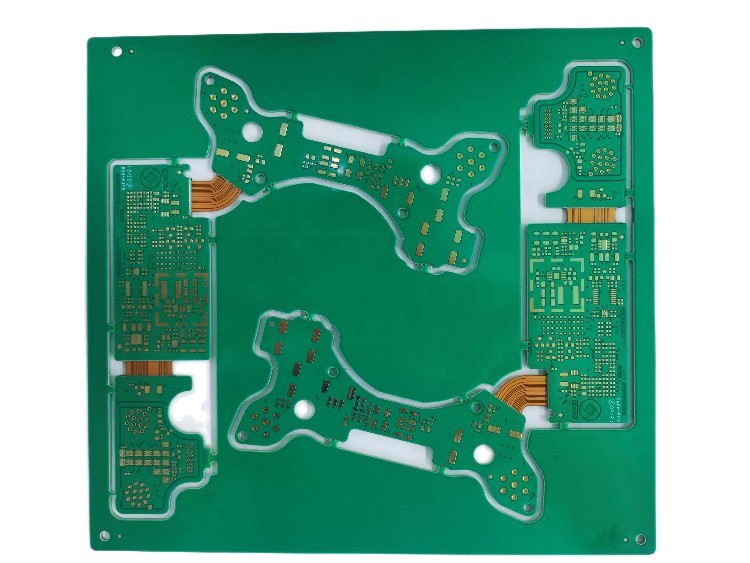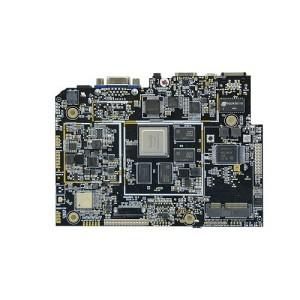Description
Number of layers: 8 (RIGID), 2 (FLEX)
Board thickness: 1.4mm
Copper thickness: 1oz
Solder Mask: YES, Green, on both sides
Silk Screen: YES, on both sides
Board Finish:ENIG

To assess the production cost of rigid-flex PCBs, the following aspects can be considered:
1. Material selection: The material cost of rigid-flex PCBs usually accounts for a large proportion of the total cost. Different types, specifications, and brands of materials will have an impact on the cost. For example, the price differences of substrates, copper foils, cover films, etc., and the use of special materials or high-performance materials will increase the cost.
2. Complexity of design: The more complex the design of the board, such as an increase in the number of layers, an increase in line density, and the design of blind and buried vias, may lead to an increase in production cost. Complex designs may require more process steps and higher technical requirements.
3. Production process: Different production processes and techniques will affect the production cost. For example, adopting advanced manufacturing processes may improve production efficiency, but it may also increase equipment and technical investment. In addition, special processing requirements or surface treatments will also increase the cost.
4. Size and quantity: The size and quantity of the board will also have an impact on the cost. Generally speaking, large-sized boards and mass production may have certain cost advantages because materials and production equipment can be better utilized.
5. Quality requirements: The higher the quality requirements for the board, such as stricter requirements for electrical performance and reliability, may lead to an increase in production cost. This may include stricter detection and testing requirements, as well as the use of higher-quality materials.
6. Market supply and demand situation: The supply and demand situation of rigid-flex PCBs in the market will also have an impact on the price. If the market demand is large and the supply is relatively tight, the price may rise; conversely, if the market competition is fierce, the price may fall.
7. Supplier selection: Different suppliers may offer different prices and services. Establishing long-term cooperative relationships with reliable suppliers and conducting sufficient negotiations and comparisons can strive for better prices and terms.
8. Additional expenses: Some additional expenses such as mold costs, testing costs, transportation costs, etc. also need to be considered. These expenses may vary depending on the specific requirements of the project.
In order to accurately assess the production cost of rigid-flex PCBs, it is recommended to have detailed communication and quotation consultation with the circuit board manufacturer. Provide accurate design requirements and specifications so that the manufacturer can give an accurate cost estimate. At the same time, the quotations of different manufacturers can be compared, and factors such as quality, delivery time, and cost can be comprehensively considered to make a reasonable decision. In addition, measures such as optimizing the design, selecting appropriate materials and processes, and reasonably controlling the production quantity can also help control the production cost.






